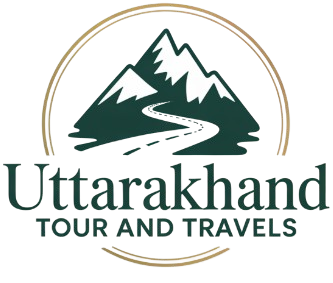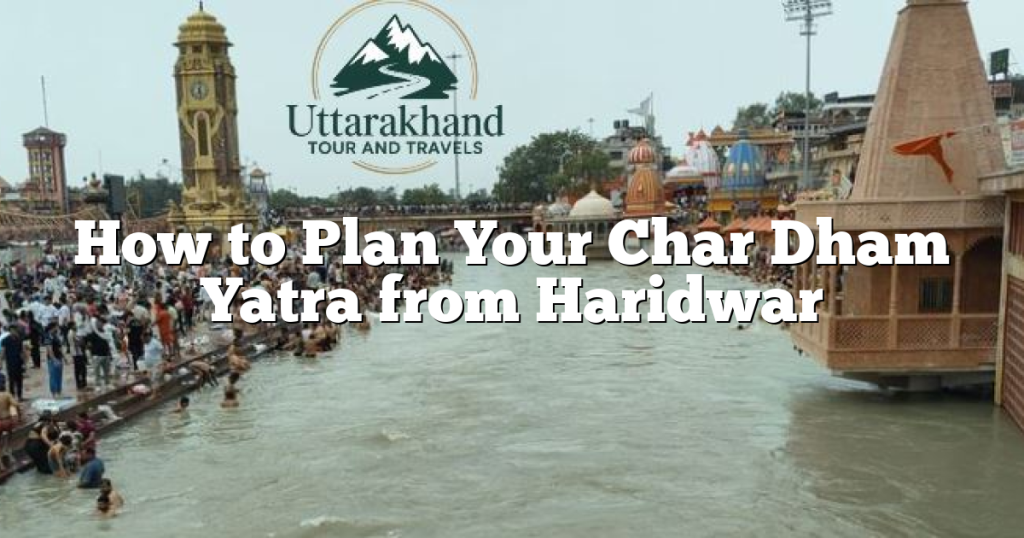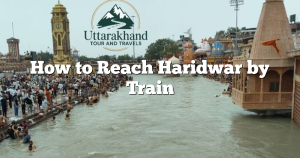The Char Dham Yatra in Uttarakhand is one of the most sacred Hindu pilgrimages, encompassing four holy shrines nestled high in the Himalayas: Yamunotri, Gangotri, Kedarnath, and Badrinath. Starting this divine journey from Haridwar is a popular choice for many pilgrims. It’s a challenging but incredibly rewarding circuit, traditionally completed in a clockwise direction: Yamunotri, then Gangotri, followed by Kedarnath, and finally Badrinath.
Due to the remote and high-altitude locations of these temples, there are no direct train or flight services to the individual Dhams. The entire pilgrimage relies heavily on road travel, combined with significant treks or helicopter services for Kedarnath and Yamunotri.
Understanding the Char Dham Journey from Haridwar
The Char Dham Yatra is a multi-day journey, typically taking 10 to 12 days to complete the full circuit from Haridwar and back. Each Dham involves a long road journey to the nearest motorable point, followed by a trek or other local transport.
The Four Dhams and Their Access Points:
- Yamunotri:
- Nearest Motorable Point: Janki Chatti (approx. 210-250 km from Haridwar).
- Trek: 6 km trek from Janki Chatti to Yamunotri Temple. Options for ponies/palanquins are available.
- Travel Time from Haridwar to Janki Chatti: 7-8 hours by road.
- Gangotri:
- Nearest Motorable Point: Gangotri Temple itself (approx. 270-290 km from Haridwar).
- Travel Time from Haridwar to Gangotri: 9-10 hours by road.
- Kedarnath:
- Nearest Motorable Point: Gaurikund/Sonprayag (approx. 230-250 km from Haridwar).
- Trek: 16-18 km trek from Gaurikund to Kedarnath Temple. Options for ponies/palanquins/helicopter services are available.
- Travel Time from Haridwar to Gaurikund/Sonprayag: 8-10 hours by road.
- Badrinath:
- Nearest Motorable Point: Badrinath Temple itself (approx. 320-330 km from Haridwar).
- Travel Time from Haridwar to Badrinath: 10-12 hours by road.
How to Plan Your Char Dham Yatra from Haridwar
1. By Road (Most Common Way)
Road travel is the backbone of the Char Dham Yatra. Pilgrims can choose from various options depending on their budget, comfort, and group size.
a. By Bus (Economical for Budget Travelers)
State-run (Uttarakhand Transport Corporation – UTC) and private buses operate on the Char Dham routes during the Yatra season.
- Where to Find Them: Buses for different Dhams typically depart from the main Haridwar ISBT (Inter State Bus Terminal) or Rishikesh Bus Stand.
- Types of Buses: Mostly non-AC seater buses. Limited luxury options.
- Pros: Most economical option for individual travelers. Connects major towns on the Char Dham route.
- Cons: Very long and tiring journeys for each leg. Can be crowded. Schedules can be unpredictable and subject to delays due to road conditions, especially during monsoon or heavy traffic. No direct bus service covers the entire circuit; you’ll need to find separate buses for each leg.
- Ticket Price Estimates: Individual bus fares for each leg can range from ₹800 to ₹1,500. For the entire circuit, a shared bus package for 9-10 days might start from around ₹17,000 per person (including basic accommodation and meals), varying by operator and amenities.
- Tips: Book tickets in advance, especially during peak season. Be prepared for long travel days and potentially uncomfortable rides.
b. By Private Taxi/Cab (Most Comfortable and Flexible)
Hiring a private taxi or cab for the entire Char Dham circuit offers the most comfort and flexibility. This is popular for families or groups.
- Where to Find Them: Numerous private taxi operators in Haridwar specialize in Char Dham Yatra packages. You can book them from the railway station, bus stand, or through hotels.
- Pros: Door-to-door service to the nearest motorable points of each Dham. Allows for flexible stops for breaks, meals, and sightseeing. Comfortable for the long journeys.
- Cons: Most expensive option.
- Price Estimates: A private taxi package for the entire 10-12 day Char Dham Yatra from Haridwar can range significantly based on vehicle type and inclusions:
- Sedan (Dzire/Etios): ₹38,000 – ₹45,000 (for the entire trip, excluding tolls/taxes/driver allowance or on a per-day basis of ₹3,800-₹4,500/day).
- SUV (Innova/Ertiga): ₹50,000 – ₹65,000 (for the entire trip, or on a per-day basis of ₹5,000-₹6,500/day).
- Tempo Traveller: ₹90,000 – ₹1.7 Lakhs (for the entire trip, depending on seating capacity and amenities).
- Note: These are estimates. Prices vary by season, vehicle condition, and operator. Always confirm inclusions like tolls, parking, driver’s food/lodging, and taxes.
- Tips: Book from reputable and government-approved taxi services. Negotiate the full package fare clearly, ensuring all costs are upfront. Choose an experienced driver familiar with Himalayan roads.
c. Self-Drive (For Experienced Mountain Drivers Only)
Undertaking the Char Dham Yatra by self-driving is an option for highly experienced drivers comfortable with challenging mountain terrain.
- Pros: Ultimate freedom and flexibility to plan your itinerary, stop anywhere, and spend as much time as desired at each location.
- Cons: Extremely long, tiring, and demanding drives on narrow, winding, and sometimes challenging mountain roads. Risk of landslides, especially during monsoon. Requires excellent vehicle maintenance and navigational skills. Parking can be an issue at popular points.
- Tips: Ensure your vehicle is perfectly serviced. Carry all necessary documents, an emergency kit, and spare parts. Start early each day. Avoid night driving. Always check real-time road conditions.
2. By Helicopter (Fastest and Most Luxurious)
For those with limited time or who prefer to avoid long road journeys and challenging treks, helicopter services offer a swift way to complete the Char Dham Yatra.
- Starting Point: Helicopter services for Char Dham typically operate from Sahastradhara Helipad in Dehradun or specific helipads near Rishikesh/Haridwar. Some services might offer pick-up from Haridwar to the helipad.
- Itinerary: Helicopter tours usually cover Kedarnath and Badrinath directly, and then provide connectivity or ground transport for Yamunotri and Gangotri.
- Pros: Significantly reduces travel time (can complete the Yatra in 1-3 days). Avoids arduous road travel and long treks. Offers breathtaking aerial views of the Himalayas.
- Cons: Most expensive option. Highly dependent on weather conditions; flights can be delayed or canceled due to bad weather (fog, rain, strong winds). Limited luggage allowance.
- Price Estimates: A full Char Dham helicopter package can range from ₹1.5 Lakhs to ₹3 Lakhs or more per person, depending on the operator, duration, and inclusions (accommodation, meals, VIP darshan).
- Tips: Book well in advance as helicopter seats are limited. Be prepared for potential weather delays. Follow all safety instructions.
3. By Train or Air (Not Practical for Dhams)
- By Train: Haridwar is a major railway station and is well-connected to various parts of India. However, beyond Haridwar (or Rishikesh), there are no railway lines extending to the Char Dhams.
- By Air: The nearest airport to the Char Dhams is Jolly Grant Airport (DED) in Dehradun. While you can fly to Dehradun from major Indian cities, there are no direct flights from Haridwar. From Dehradun, you would still need to embark on the long road and/or trekking journey to the Dhams, unless opting for helicopter services.
Important Considerations for Char Dham Yatra
- Yatra Season (Opening and Closing Dates): The Char Dham temples are open only for a limited period each year, typically from late April/early May to October/early November, due to heavy snowfall in winter. The exact opening and closing dates are announced annually. For 2025, Badrinath is scheduled to open on May 4, and other dates are typically announced around Basant Panchami.
- Pilgrim Registration: Biometric registration for the Char Dham Yatra is often mandatory. This can be done online or at various physical counters along the route (Haridwar, Rishikesh, Barkot, Janki Chatti, Uttarkashi, Guptkashi, Joshimath, etc.). Complete this before you begin.
- Altitude Sickness (AMS): The high altitudes of the Dhams (especially Kedarnath and Badrinath) can cause AMS. Acclimatize gradually, stay hydrated, avoid overexertion, and carry necessary medications.
- Weather: Himalayan weather is highly unpredictable. Carry layers of warm clothing, rain gear, sturdy trekking shoes, and basic medical supplies.
- Accommodation and Food: During the Yatra season, a wide range of accommodation (from basic dharamshalas to decent hotels) and food options are available in major towns along the route and near the base camps.
- Road Conditions: Roads can be challenging, narrow, and prone to landslides during the monsoon (July-August). Always check the latest road and weather reports.
The Char Dham Yatra from Haridwar is a journey of faith that tests endurance but promises spiritual solace and awe-inspiring natural beauty. Proper planning, physical fitness, and an understanding of the travel logistics are crucial for a fulfilling pilgrimage.









